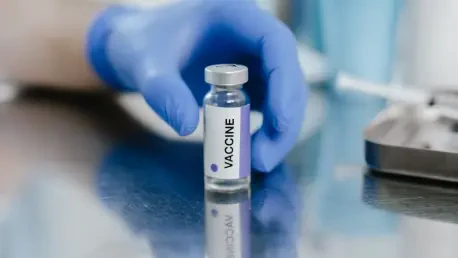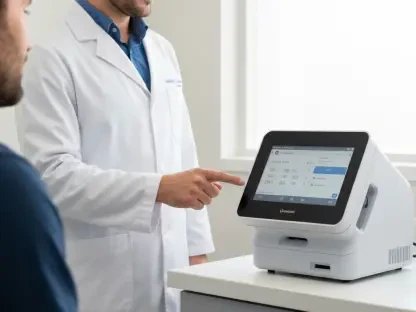The biopharmaceutical industry is entering its modular era. Drug development no longer operates with singular, siloed breakthroughs, but rather thrives on systems that are reused, reconfigured, and simulated. From plug-and-play manufacturing redefining flexibility to digital twins transforming clinical guesswork into predictive science, adopting a more modular approach is revolutionizing drug development processes for the better.
This article explores how modularity is shifting operations toward embracing more adaptive toolkits to empower the sector to move speedier, smarter, and more precisely by re-architecting the entire lifecycle of drug development.
The Power of Reusable Platforms
Take a moment to imagine developing software sans code libraries—the painstaking task of manually memorizing and creating code that is accurate and precise without guiding frameworks. Scary, right? Well, that’s essentially what drug discovery used to be. Now, the proliferation of reusable platform technologies is transforming the efficiency and quality of product development processes by using prior knowledge for the creation of new molecules.
This innovative approach enables biopharmaceutical companies to provide a foundation for the development of medical products and applications. By capitalizing on the versatility of platform tech, these enterprises can unlock skyrocketing levels of scalability while addressing a variety of clinical complexities.
Additionally, leveraging this approach empowers both cost and time savings by speeding up R&D timelines with security and efficacy at the forefront. Platform technologies also streamline regulatory approval processes by creating safety profiles to ensure biopharma organizations stay ahead in the highly competitive market.
Core Principles
The modularity of platform technology enables R&D teams to reduce developmental redundancy through the integration of new functionalities as they become needed. To ensure consistent outcomes across applications, this approach emphasizes the importance of reproducibility and standardization—which outlines protocols that ensure industry alignment with regulatory requirements. Finally, adopting this approach enhances operational efficiency by reapplying core technologies to emerging use cases and minimizing resource usage.
Spotlighting Argos Therapeutics
With a dedication to the development of individualized immunotherapies for cancer treatments, Argos Therapeutics leverages its Arcelis® technology platform to capture mutated and variant disease-specific antigens. By adopting a platform technology approach, this company is able to sidestep immunosuppression by creating a durable memory T-cell response free of toxic adjuvants.
According to Dr. Charles Nicollete, this precision immunotherapy tech has the potential to be applied to a diverse range of cancer treatments by overcoming the commercialization challenges previously hindering personalized, cell-based therapies. This is because a single production run of activated, antigen-loaded dendritic cells can make enough to treat a patient for many years. To further optimize this process, Argos leverages automated manufacturing that meets the post-launch commercial demand more quickly.
Plug-and-Play Manufacturing
This increasing need extends to rapid market introduction, flexibility, and reduced implementation time—putting more pressure on biopharma organizations to develop highly innovative products. Many companies in the pharmaceutical sector already operate under stringent regulations; therefore, optimizing these processes requires an approach that can uphold these constraints. Enter plug-and-play manufacturing: A future-forward approach that ensures adaptability while maintaining industry regulations.
Modern biopharmaceutical enterprises require custom coding and exhaustive efforts to integrate new manufacturing equipment into existing operations. By adopting plug-and-play technology, these companies can do so seamlessly and minimize the time dedicated to the developmental process. Additionally, adopting this approach enables R&D teams to unlock unparalleled operational flexibility.
Core Principles
One of the most significant aspects of plug-and-play manufacturing is the use of compact aseptic vial filling systems to propel pharmaceutical production—from space optimization to GMP regulatory compliance. The size of these systems allows for greater space efficiency by freeing up already limited facilities for other essential equipment.
The compactness of these systems also produces a smaller footprint that minimizes contamination risk as it’s easier to gauge what needs to be sanitized and controlled, while reducing downtime for routine maintenance. Embracing aseptic vial filling systems also helps to ensure the sterility and quality of the products being developed.
Spotlighting Wacker’s PLASMITEC®
As the basis for a myriad of advanced therapies and innovative therapeutic agents, the demand for plasmid DNA is greater than ever before. To answer this call, Wacker has introduced a versatile plug-and-play platform, PLASMITEC®, that provides unparalleled recovery and reliability capabilities.
With this solution, biophysicists are able to generate and select only the best-performing strains to produce supercoiled or linearized plasmid DNA by optimizing lab processes to support feasibility, tech transfer, and comparability. Additionally, the production yield of plasmids can be scaled up or down per customer needs for all phases of clinical development and commercial supply.
Digital Twin Simulation
For a moment, think beyond flexible manufacturing. What if you could take predictability to the next level? Many organizations within the biopharma sector are embracing the possibility of testing resources in real time before taking the leap to full commitment through the power of digital twin simulation. Borrowed from industries like aerospace and automotive, this advanced technology establishes smarter systems that support real-time production by sensing, predicting, and interacting with physical environments.
Biopharmaceutical companies leverage digital twins to create virtual copies of physical assets through VR, AR, and 3D graphics to gain insights into real-world counterpart performance and bolster decision-making processes. The difference between this technology and other digital models or shadows is that it eliminates two-way data transfer by synchronizing physical assets and virtual production—which generates data otherwise lost during the asset’s lifecycle.
However, leveraging digital twins does not exist just to simulate observational scenarios, but to act out “what if” incidents, forecast yield complications, or model scale-up effects prior to introducing products to the market.
Core Principles
To optimize the flow of materials, energy consumption, and drug production, digital twin technology utilizes real-time and historical data to simulate various scenarios and outline the most efficient and effective drug production pathways. The aim of this is to generate a robust manufacturing process that weathers away waste and propels output simultaneously. However, in doing so, biophysicists need to ensure that product quality is maintained, if not enhanced. Digital twin technology lends a hand in achieving this goal through continuous monitoring capabilities for critical quality attributes.
This is done by comparing real data with existing benchmarks to accurately detect anomalies that decrease quality. Taking a more proactive approach ensures that consistency and safety are upheld while promptly correcting any deviations. Leveraging digital twins as part of this process also facilitates Quality by Design principles, which rely on specific pharmaceutical design and development formulations that empower predefined product quality.
Spotlighting Sanofi
Biopharmaceutical companies dedicated to digital transformation are increasingly experimenting with digital twins to streamline and elevate their operations. Take a look at Sanofi, a French pharma company that has embraced this advanced technology to simulate drug behaviors and patient outcomes across dozens of disease areas. From immunology to oncology, this organization constructs virtual replicas of patients by integrating biological data with advanced modeling techniques—enabling simulation of disease progression and treatment response.
For example, Sanofi leverages digital twin models to accelerate and optimize the development of an asthma drug candidate, Lunsekimig. This is done by accurately predicting clinical endpoints, aligning these hypotheses with trial outcomes and supporting data from real patients. The tech has also been instrumental in expediting regulatory processes for rare disease treatments, such as in the case of Niemann-Pick disease, by limiting the need for large-scale pediatric studies.
Conclusion
Modularity is no longer a conceptual paradigm shift, but a fresh operational biopharma blueprint for optimized and accelerated efficiency. From Argos Therapeutics’ reusable platform streamlining immunotherapy production to Sanofi’s digital twin technology predicting outcomes before drugs are introduced to market, every approach to modular biopharmaceutical practices unlocks unparalleled foresight and adaptability.
As the boundaries between R&D, manufacturing, and real-world outcomes continue to blur, modularity ensures that these processes don’t fall short under the pressures of increasing demands. In the modular world, innovation isn’t just scalable, it’s inevitable—and converging biopharma processes into a smarter, integrated future is the first step in realizing this potential.









